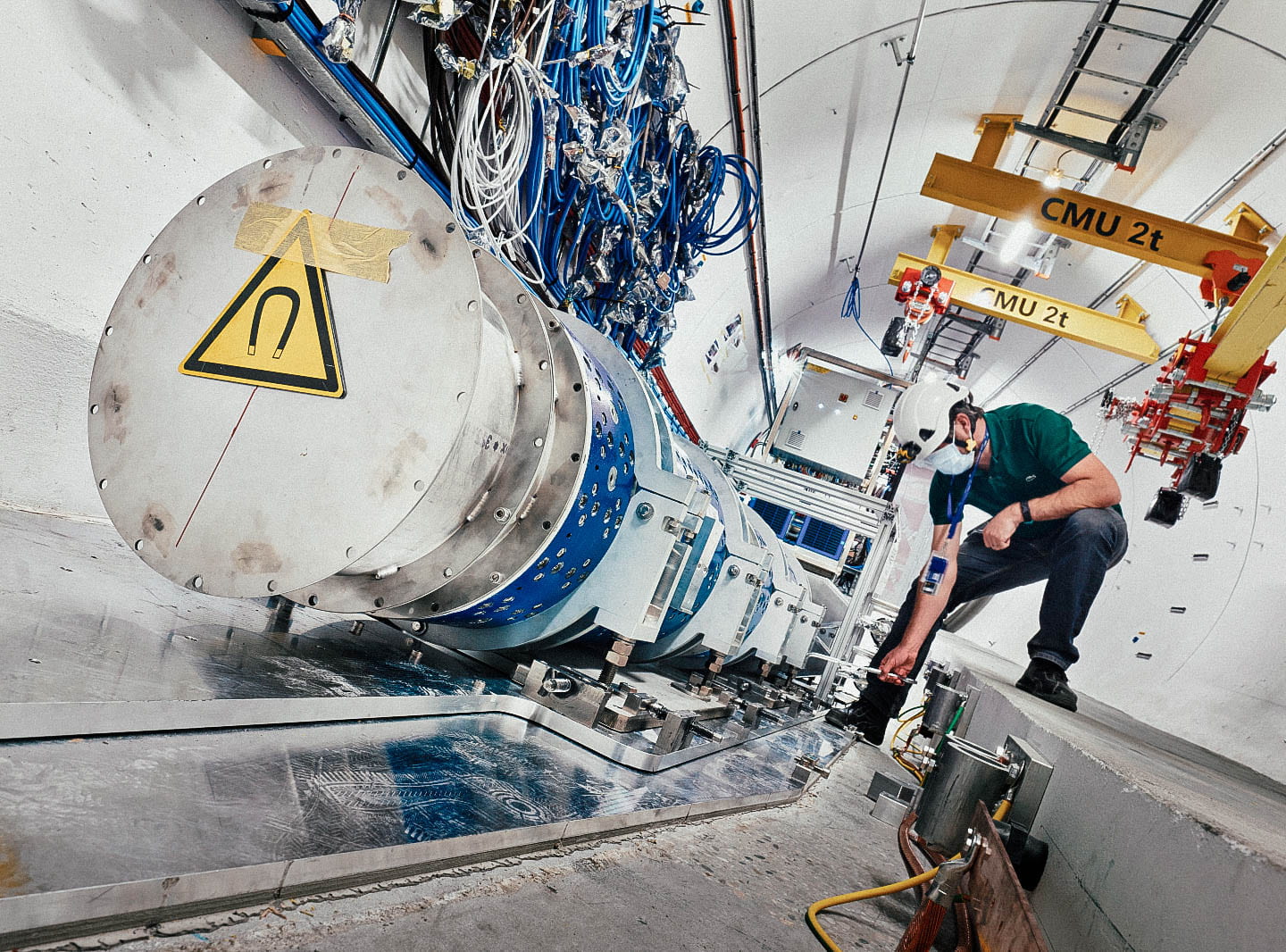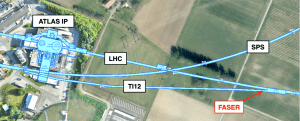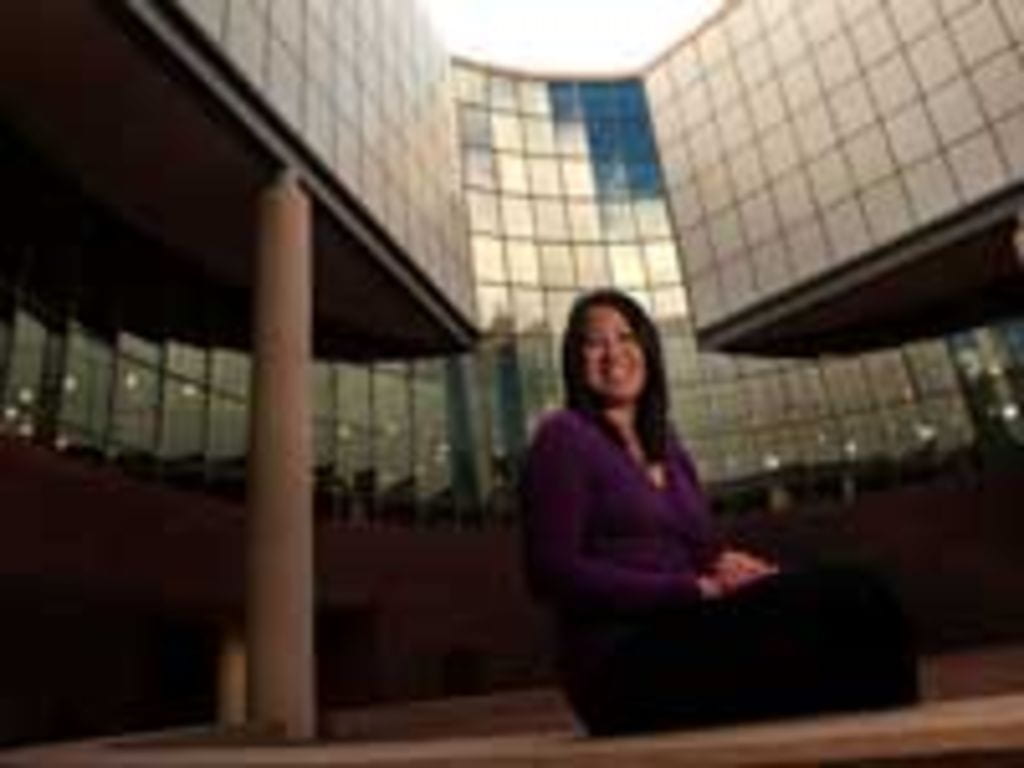UCI-led team of physicists detects signs of neutrinos at Large Hadron Collider
Scientific first at CERN facility a preview of upcoming 3-year research campaign

Irvine, Calif., Nov. 24, 2021 — The international Forward Search Experiment team, led by physicists at the University of California, Irvine, has achieved the first-ever detection of neutrino candidates produced by the Large Hadron Collider at the CERN facility near Geneva, Switzerland.
In a paper published today in the journal Physical Review D, the researchers describe how they observed six neutrino interactions during a pilot run of a compact emulsion detector installed at the LHC in 2018.
“Prior to this project, no sign of neutrinos has ever been seen at a particle collider,” said co-author Jonathan Feng, UCI Distinguished Professor of physics & astronomy and co-leader of the FASER Collaboration. “This significant breakthrough is a step toward developing a deeper understanding of these elusive particles and the role they play in the universe.”
He said the discovery made during the pilot gave his team two crucial pieces of information.
“First, it verified that the position forward of the ATLAS interaction point at the LHC is the right location for detecting collider neutrinos,” Feng said. “Second, our efforts demonstrated the effectiveness of using an emulsion detector to observe these kinds of neutrino interactions.”

Photo courtesy of CERN
The pilot instrument was made up of lead and tungsten plates alternated with layers of emulsion. During particle collisions at the LHC, some of the neutrinos produced smash into nuclei in the dense metals, creating particles that travel through the emulsion layers and create marks that are visible following processing. These etchings provide clues about the energies of the particles, their flavors – tau, muon or electron – and whether they’re neutrinos or antineutrinos.
According to Feng, the emulsion operates in a fashion similar to photography in the pre-digital camera era. When 35-millimeter film is exposed to light, photons leave tracks that are revealed as patterns when the film is developed. The FASER researchers were likewise able to see neutrino interactions after removing and developing the detector’s emulsion layers.
“Having verified the effectiveness of the emulsion detector approach for observing the interactions of neutrinos produced at a particle collider, the FASER team is now preparing a new series of experiments with a full instrument that’s much larger and significantly more sensitive,” Feng said.
Since 2019, he and his colleagues have been getting ready to conduct an experiment with FASER instruments to investigate dark matter at the LHC. They’re hoping to detect dark photons, which would give researchers a first glimpse into how dark matter interacts with normal atoms and the other matter in the universe through nongravitational forces.
With the success of their neutrino work over the past few years, the FASER team – consisting of 76 physicists from 21 institutions in nine countries – is combining a new emulsion detector with the FASER apparatus. While the pilot detector weighed about 64 pounds, the FASERnu instrument will be more than 2,400 pounds, and it will be much more reactive and able to differentiate among neutrino varieties.
“Given the power of our new detector and its prime location at CERN, we expect to be able to record more than 10,000 neutrino interactions in the next run of the LHC, beginning in 2022,” said co-author David Casper, FASER project co-leader and associate professor of physics & astronomy at UCI. “We will detect the highest-energy neutrinos that have ever been produced from a human-made source.”
What makes FASERnu unique, he said, is that while other experiments have been able to distinguish between one or two kinds of neutrinos, it will be able to observe all three flavors plus their antineutrino counterparts. Casper said that there have only been about 10 observations of tau neutrinos in all of human history but that he expects his team will be able to double or triple that number over the next three years.
“This is an incredibly nice tie-in to the tradition at the physics department here at UCI,” Feng said, “because it’s continuing on with the legacy of Frederick Reines, a UCI founding faculty member who won the Nobel Prize in physics for being the first to discover neutrinos.”
“We’ve produced a world-class experiment at the world’s premier particle physics laboratory in record time and with very untraditional sources,” Casper said. “We owe an enormous debt of gratitude to the Heising-Simons Foundation and the Simons Foundation, as well as the Japan Society for the Promotion of Science and CERN, which supported us generously.”
Savannah Shively and Jason Arakawa, UCI Ph.D. students in physics & astronomy, also contributed to the paper.
About the University of California, Irvine: Founded in 1965, UCI is the youngest member of the prestigious Association of American Universities and is ranked among the nation’s top 10 public universities by U.S. News & World Report. The campus has produced three Nobel laureates and is known for its academic achievement, premier research, innovation and anteater mascot. Led by Chancellor Howard Gillman, UCI has more than 36,000 students and offers 224 degree programs. It’s located in one of the world’s safest and most economically vibrant communities and is Orange County’s largest employer, contributing $7 billion annually to the local economy and $8 billion statewide. For more on UCI, visit www.uci.edu.
Media access: Radio programs/stations may, for a fee, use an on-campus ISDN line to interview UCI faculty and experts, subject to availability and university approval. For more UCI news, visit news.uci.edu. Additional resources for journalists may be found at communications.uci.edu/for-journalists.
About the UCI’s Brilliant Future campaign: Publicly launched on October 4, 2019, the Brilliant Future campaign aims to raise awareness and support for UCI. By engaging 75,000 alumni and garnering $2 billion in philanthropic investment, UCI seeks to reach new heights of excellence in student success, health and wellness, research and more. The School of Physical Sciences plays a vital role in the success of the campaign. Learn more by visiting: https://brilliantfuture.uci.edu/uci-school-of-physical-sciences/.


